The Hallway: Great Halls, Hidden Passages, and Everything in Between
Every year, At Home in Chicago shares a range of stories from its historic house museums, each rooted in a common theme, place, or idea. This year it's all about the hallway. We have tales of murder, funky art installations, secret fire doors, architectural drama, and much, much, more. You're invited to come by anytime and linger in our Great Halls, corridors, and secret passageways... and see what notions they evoke for you.
-

6018North
in this hallway…
In 6018North's upstairs corridor, artists Lise Haller Baggesen and J. Thomas Pallas collaborated to explore various types of social protests of the 1960s and ‘70s—from the Civil Rights Movement to glam rock. To see the historical photos, the silver images can be scratched off like lotto tickets, which, like protests, are aspirational for a better life.
-
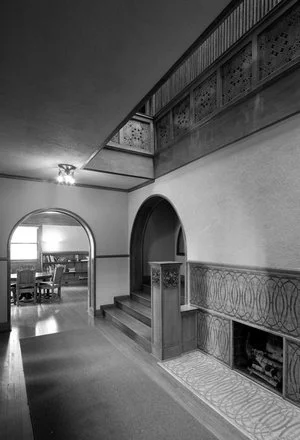
Charnley-Persky House Museum
In this hallway…
Louis Sullivan and Frank Lloyd Wright worked together to bring the outside indoors for the Charnley-Perksy House’s front hall. The sunshine streaming in makes for a warm welcome just inside the front door, and is a testament to the new Prairie School architects’ belief in connecting architecture to the beauty of nature.
-
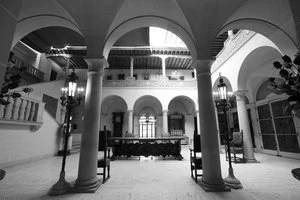
Cuneo Mansion and Gardens
In this hallway…
Our Great Hall was intended to mimic a classic Roman villa courtyard. The home’s original owner, Samuel Insull, installed an electric retractable roof (circa 1915!), barely visible in the top center of the photograph.
-
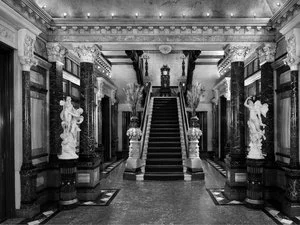
The Driehaus Museum
In this hallway…
The Nickerson Mansion quickly became known to Chicago as the “Marble Palace,” thanks to the 17 different types of marble represented in the dramatic Main Hall. In 1899, a pair of robbers broke a front window and entered the home. They slipped through the Main Hall, leaving drips of candle wax behind them, and attempted to break into the safe behind the staircase. Luckily, Mrs. Nickerson awoke and presumably frightened the thieves away before she could discover them in the act, and they never got near the family silver.
-
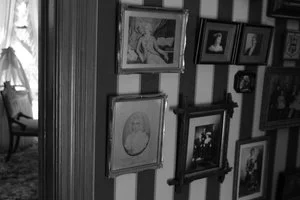
The Ernest Hemingway Birthplace
in this hallway…
If you peek through the left door in the narrow upstairs hall of Ernest Hemingway’s childhood home, you can see where the great writer was born. The hallway walls are hung with portraits of his ancestors and immediate family, but it was Ernest’s grandfather, who lived with the family, who really made a difference in the young boy’s life. “You better keep an eye on that child, Gracie,” Mr. Hall told Ernest’s mother. “One day his imagination will make him famous—or if not, land him in jail.”
-

Evanston History Center at the Charles Gates Dawes House
In this hallway…
The dramatic Great Hall is defined by the sweeping carved oak stairway, a huge stone fireplace with flanking benches forming a cozy inglenook, mammoth stained glass windows and an ornate plaster ceiling. Medieval heraldry in the glass reflects the Scottish ancestry of the first owner, Rev. Robert D. Sheppard, while the religious allusions in the wood carving reference his ministry.
-
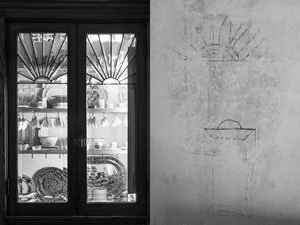
Frances Willard House Museum
In this hallway…
During her 1890 restoration of the house, Frances Willard had leaded glass windows installed in the dining room cabinet. She called them “the Sunrise Windows” because it was the dawning of a new day for women. During our own interior restoration in 2016, we discovered a mysterious sketch on the wall in the hall—notice the resemblance?
-
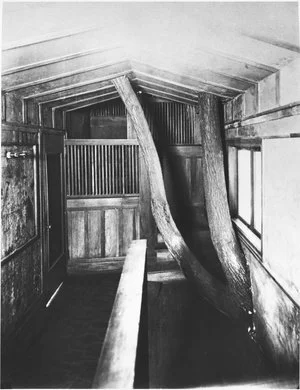
Frank Lloyd Wright Home and Studio
In this hallway…
Nature was integral to Frank Lloyd Wright’s vision for a modern American architecture. In the architect’s own Home and Studio in Oak Park, a passageway connecting the two buildings was built around an existing willow tree, the limbs of which extend through the structure.
-
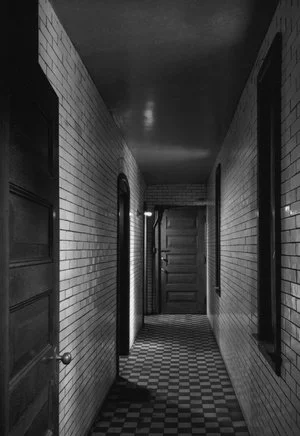
Glessner House
In this hallway...
H. H. Richardson made the unusual move of placing the long servants’ corridor along the street side of the Glessner House. In addition to making way for a busy staff of eight, this was an efficient choice for the Glessners’ winter home. The best insulation in the world is air, so the north-facing servants’ hallway protected the family and their guests from Chicago’s frosty winds.
-
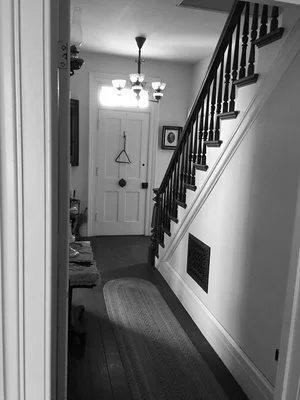
The Grove National Historic Landmark
In this hallway…
The Grove happened to be the destination for Chicagoans on weekend excursions in the countryside. So the Kennicotts welcomed many esteemed guests in their hallway, including John Evans (namesake of Evanston, Illinois and founder of Northwestern University) and John S. Wright (founding editor of Prairie Farmer magazine). They always came away with beautiful and fragrant bouquets.
-

Jane Addams Hull-House Museum
In this hallway…
The Hull House Settlement grew from one building to thirteen between 1889 and 1907. The buildings surrounded an interior courtyard and were linked by passageways, allowing the activities and groups in each building to connect with one another. Today, just two buildings in the complex remain: the Jane Addams Hull-House Museum and the Resident’s Dining Hall, with one new passageway between them.
-
Kalo Foundation/Iannelli Studio
In this hallway…
Our hallways have seen many greats pass through, many of whom stayed and produced great works. The Studio was a day to day business, but encouraged greatness in all who worked here. There was much collaboration between Alfonso and those who worked and lived here. This Studio touched the lives of many. The Studios was the start of many great and prolific careers. Pass through our hall and find out more.
-
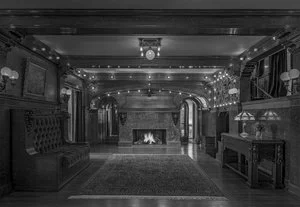
Pleasant Home
In this hallway…
Architect George W. Maher modeled the Pleasant Home Great Hall after Louis Sullivan’s magnificent Auditorium Theatre in downtown Chicago. Guests were greeted to a dazzling display of electric lights, the newest technology in 1897, and the sounds of a live orchestra floating through an intricately hand-carved oak music screen. If you listen very carefully, you might still hear the echoes of the Farsons’ spectacular turn-of-the-century parties'85
-
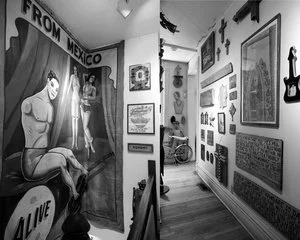
Roger Brown Study Collection
In this hallway…
In Roger Brown’s narrow hallway, a large freak show banner depicts an armless guitar player, José De León. Opposite him is an extraordinary drawing by Martín Ramírez, a Mexican immigrant who was mistakenly institutionalized in a psychiatric hospital. It’s as if physically disabled León is drawing solace from the spirituality of incarcerated Ramírez—two outcasts creating their own religiosity, which may well reflect Brown’s own spiritual notions.
-

Schweikher House
In this hallway…
Paul Schweikher was an early pioneer of green buildings, and he designed a passive solar heating system for his 1938 bedroom hallway. His inventive adoption of passive heating technology started with Chicago’s Century of Progress International Exposition five years earlier, when Schweikher partnered with another pioneer, George Fred Keck, on one of the forward-thinking “Homes of Tomorrow.“